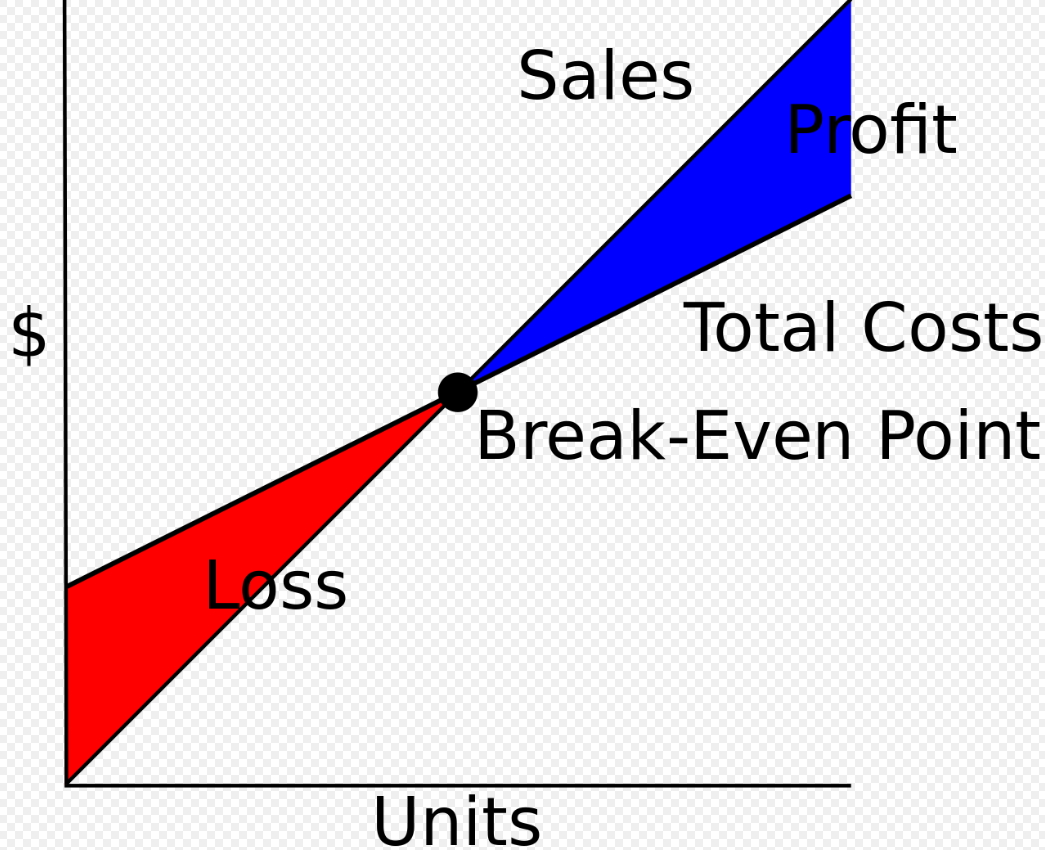Today many retailers who are approaching financial institutions are being asked by them to provide estimates. It is not that these institutions are worried about security as most of these loans the government is helping out with that now, what they are concerned with is can you pay the loans?
One of the best tools to reassure these people is the break-even analysis, something that I have discussed here a lot but now seems to be mentioned a lot more.
The Break-even point, where profits are equal to expenses!

Although because of coronavirus, its all the rage now. It has however widespread use beyond that e.g. how much extra sales do I need to cover a proposed shop fit to make my initial investment back, how much additional sales do I need to pay back the setup and running costs of a loyalty program or how much extra sales do I need to increase my shop hours?
It is an invaluable starting point for finding out where you are at and where you can go. In this case here, is it better for the business to spend its spare money on a shop fit, a loyalty program or to increase its hours?
Here what the financial institutions want to know now is how much business could you lose and still pay your way?
Now what people often do is give the figures to the accountant and let them do the analysis, which is what these financial institutions want but now they are being very flexible and often will take your figures.
To calculate a shop's break-even point in you need to know the values of three variables: You can get it out of your profit and loss accounts
Sales turnover: This is simply your turnover (this one is generally easy to get)
Now go through your expenses and put them into these categories.
Fixed costs: These are costs that don’t change whether you sell a few or a lot. These are the costs of just keeping the door of the shop open.
Some examples are
Rent
Full-time staff
Insurance
Electricity bills
Bank repayments
Accountant fees
These need to be added up.
Variable costs: These are costs that depend on sales, the more you sell the higher they are:
Part-time staff
Cost of goods sold
Credit card fees
Now, these need to be added up too.
Notes here:
Some of these costs can get programmatic as to which category they are in when there is doubt the rule is to put them in fixed. Generally, unless they are huge, it does not matter much.
Also, often people argue that some of these variable costs change dramatically depending on volume. Well in most situations unless you go pie in the sky, they do not change that much, e.g. you can get a better margin on many items if you sell heaps but are you likely to sell heaps? Like everything, you do need some intelligence to use this analysis.
Now the formula is
Variable profit = (1- (Variable costs)/Turnover) This gives you your shop profit for each $1 you sell.
Now the Break-even point is (Fixed cost)/(Variable profit)
Say for example you had a turnover of $550,000
Your Fixed costs are $60,000 a year
Your cost of goods sold is $370,000
Your other variable costs are $40,000
So your variable cost is here is $370,000+n $40,000 = $410,000
Variable profit = (1- (Variable costs)/Turnover) This gives you, your Variable profit = (1- (410,000)/550,000) = 0.218
Now the Break-even point is (Fixed cost) /(Variable profit). This gives you your Break-even point as (60,000)/(.218) = $235,714.29
This would signify that this business is relatively healthy from coronavirus as it can continue with over half the loss of its sales.
Once you get used to doing it, you will find that it typically is like half an hours work.
Now what a lot of retailers would do now is look at their basket reports in their point of sale software, see what a typical basket profit is and divided that into the Break-even point. This determines how many sales they need a day, but that is just the start because there are heaps you can do with it and this will be a subject for a future post.
If there is a lot of interest, I am quite happy to do a webinar on this calculation, so please let me know.


